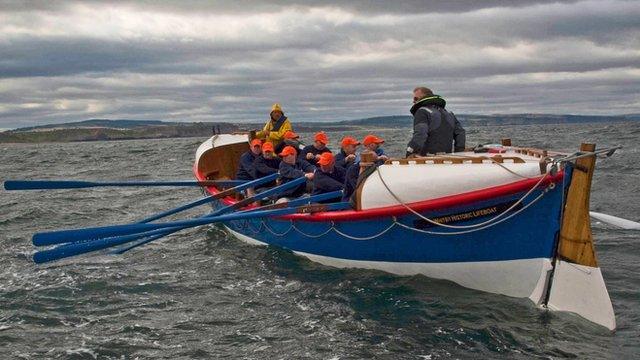Woman thanks RNLI for saving Titanic survivor in second shipwreck
- Published

Fiona Kilbane said her great-grandmother was a "determined woman"
A woman has thanked the RNLI for saving her great-grandmother in a shipwreck two years after she survived the sinking of the Titanic.
Fiona Kilbane, from Somerset, said her great-grandmother Mary Roberts was a "determined" woman.
She was the head stewardess on the Titanic when it sank in 1912.
Two years' later she was saved by the RNLI when working as a nurse on the Rohilla, which sank off the coast of Whitby in North Yorkshire.
Hayley Whiting, RNLI heritage and archive manager said: "We can never really decided if Mary Roberts is really lucky or unlucky, it depends on how you want to look at her."
The Rohilla sank on 30 October 1914 after running around on Saltwick Nab, a reef near Whitby, during a storm when lighthouses were not lit up due to World War One.
The ship had been en-route to Dunkirk to help wounded soldiers but was broken up when it ran aground on rocks.
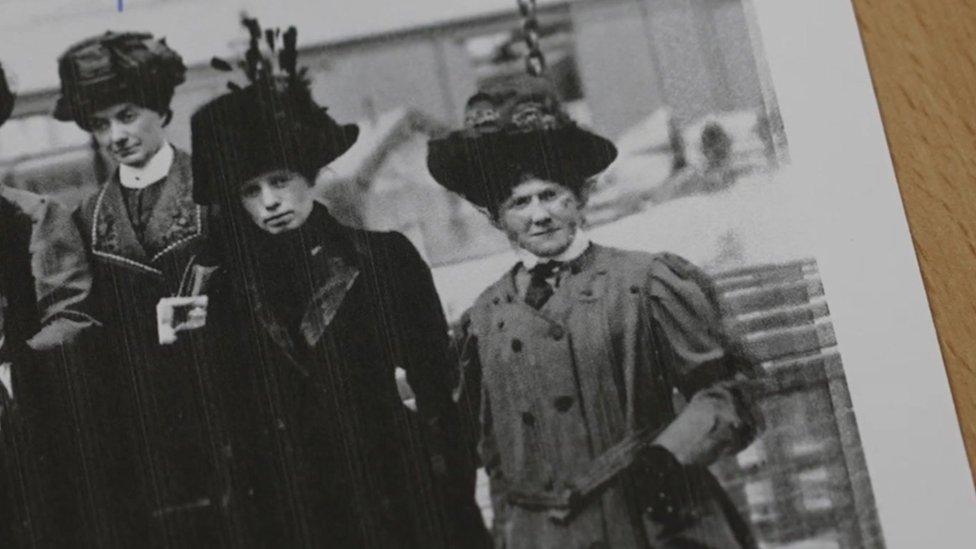
Mary Roberts, right was a mother-of-five
Ms Kilbane said: "The RNLI lifeboat volunteers went out on a rowing boat and from accounts had real trouble getting the boats out to sea.
"You can't imagine in those times rowing in rough seas, October storms and then Mary climbing over board in long dresses - she must have been mad."
'Very lucky'
Hayley Whiting, RNLI heritage and archive manager, said: "Whitby lifeboats were launched but it's an incredibly difficult [rescue]. It was in gale conditions and those lifeboats were pulling and sailing lifeboats - so men in row boats were going out to the ship in gale force conditions.
"They did get out [to the ship] and Mary Roberts was rescued."
The rescue attempt took three days, with lifeboats managing to rescue more than 140 people of the 229 on the Rohilla.
The Gold Medal of the RNLI, the institute's highest honour, was awarded to some of the rescuers as well as the George Cross.
"She was lucky to survive all the ships she was on," Ms Kilbane added.
"The RNLI has evolved incredibly to what they do nowadays but to think there are guys who volunteer to go out in those rough seas.".
Mary Roberts' trunk was later found washed up on the beach.
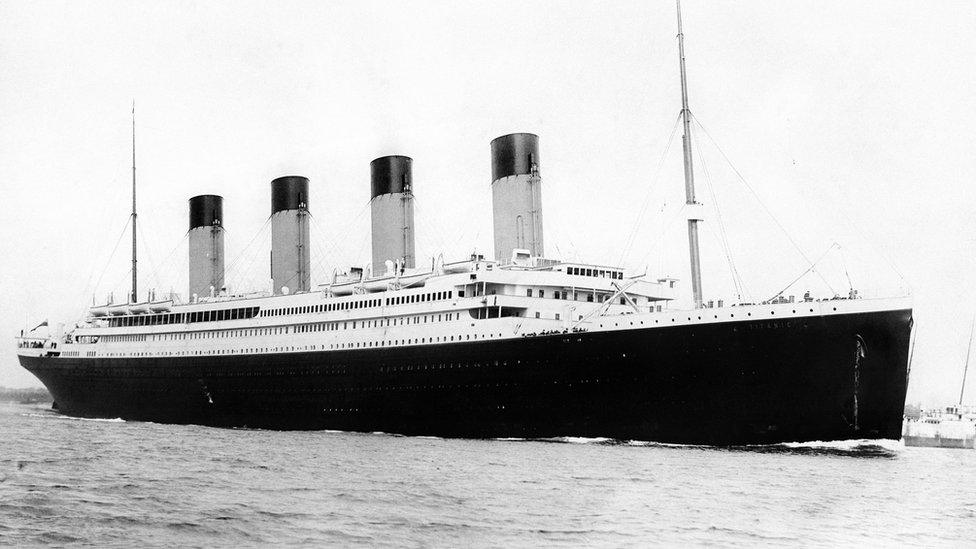
The RMS Titanic, seen here departing Southampton on 10 April 1912 for her fateful voyage
Two years prior she had survived the sinking of the Titanic, which struck an iceberg in the North Atlantic on 14 April, 1912, on the way to New York.
More than 1,500 people died when the ship sank in the early hours of the following day.
Ms Kilbane said: "She was a very determined lady definitely, to be one of 700 people to have survived - to think 'I'm going to get off this boat'."
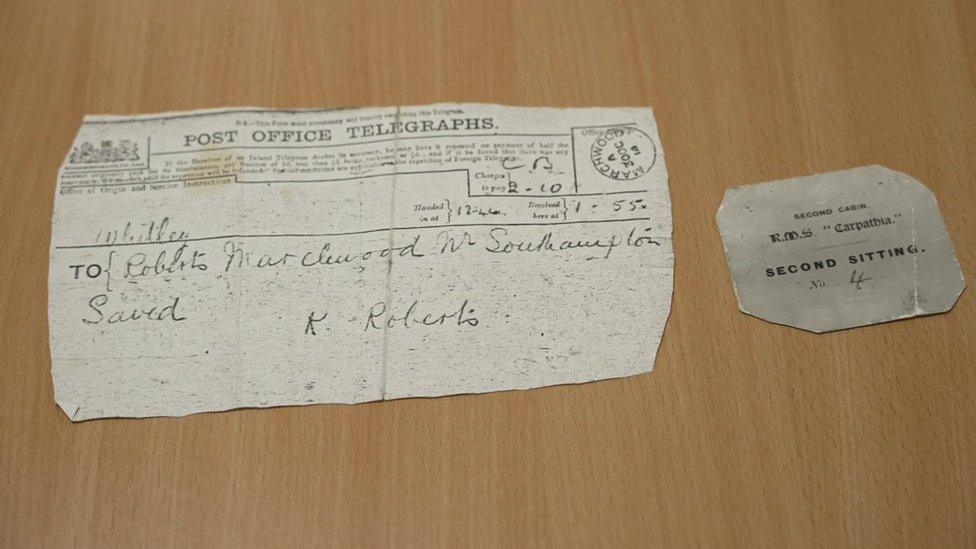
A telegram showing that Mary was safe after the Titanic sunk
"She was brave and independent. She had sent her children away to school and her husband was at home working and she just did what she wanted to do - which was unusual for those times.
"I don't think as a young child it really dawned on me what kind of woman this was but then to learn later about her history of sinking ships you are in awe of this woman, thinking 'why would you go on another ship if you were on one that sunk?'," Ms Kilbane added.

Follow BBC Somerset on Facebook, external and, X, external. Send your story ideas to us on email, external or via WhatsApp on 0800 313 4630, external.
Related topics
- Published5 November 2023

- Published12 February 2024
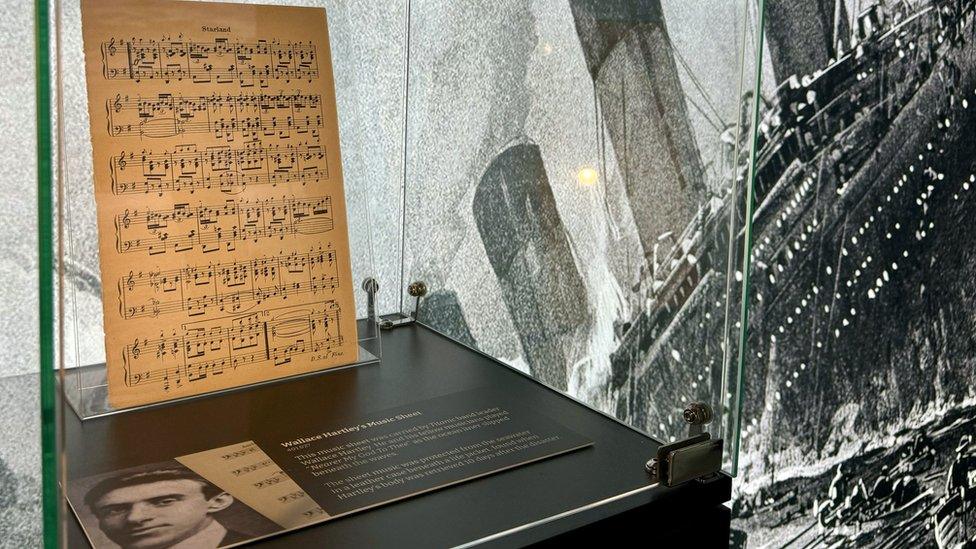
- Published12 November 2023
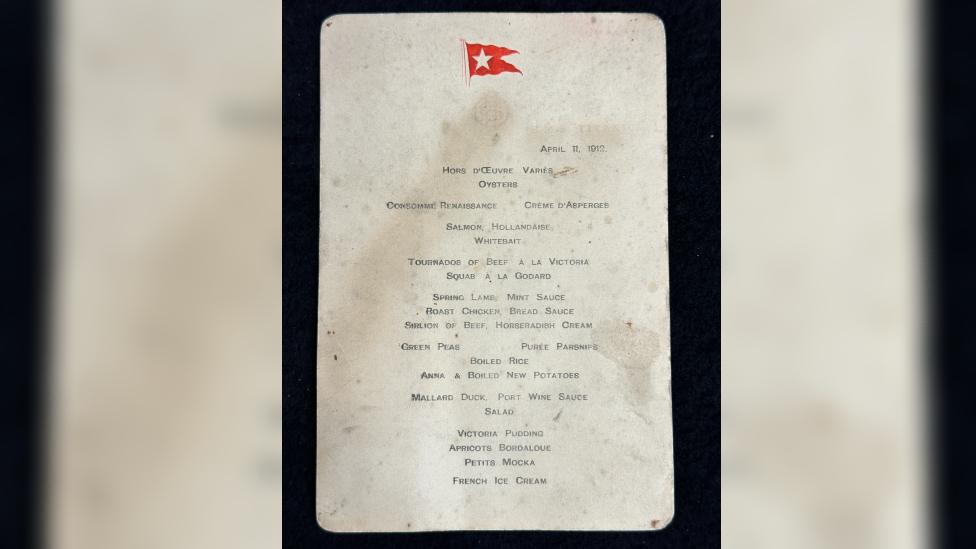
- Published17 August 2014
